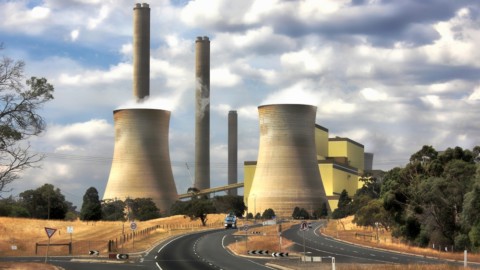The Western Australian Government will invest more than $3 billion to address climate change and help achieve net zero emissions by 2050 as part of the 2023-24 State Budget.
Supercharging Western Australia’s transition to cleaner, reliable and affordable energy, the State Budget includes $2.8 billion for energy storage, wind power generation and transmission network upgrades on the State’s main electricity grid.
The massive funding injection will help to replace the generation capacity of State-owned coal-fired power stations, which will be retired by 2030, to ensure a stable and secure electricity supply for Western Australia.
Part of the Budget package includes:
- Investing$2.3 billion to deliver new battery storage on the South West Interconnected System (SWIS)
- A battery energy storage system in Collie, which has the potential to be one of the world’s biggest systems, providing around 500MW for up to four hours
- The system will be operational before the end of 2025.funding to deliver the 200MW Kwinana Battery Energy Storage System 2 (KBESS2), which will provide four hours of storage, complementing the existing Big Battery at Kwinana
- $368 million for up to 210MW of large-scale renewable energy generation projects including a new wind farm at King Rocks and a potential expansion of Bright Energy Investments’ existing 180MW Warradarge Wind Farm near Eneabba
- $31.8 million to facilitate green energy project approvals
Large-scale batteries will be an essential part of Western Australia’s energy future, collecting excess energy from the State’s vast rooftop solar resources during the day, and releasing green energy when it is needed at peak times.
Along with the previously announced Water Corporation investment into Stage 2 of the Flat Rocks wind farm, and subject to the relevant approvals, these projects form the initial pipeline earmarked for development in June 2022 when the State Government announced the retirement of State-owned coal-fired power stations.
It builds on the $126 million investment towards electricity network planning and upgrades announced alongside the SWIS Demand Assessment report earlier this week, to help industry and government move towards net zero emissions by 2050.
$65.3 million has also been allocated for enabling works at the new Alkimos Seawater Desalination Plant, securing the State’s drinking water supply as rainfall continues to decline in Perth and the South-West.
At full capacity, the renewable energy-powered plant will be able to supply 100 billion litres of clean, safe drinking water to millions of Western Australians each year.
The State Budget includes almost $40 million to develop climate-resilient communities, supporting the Western Australia Climate Adaptation Strategy – which is scheduled for release later this year and will set out core directions for a state-wide adaptation response.
Adaptation is taking action to prepare and adjust to the unavoidable impacts of climate change. It includes initiatives to improve knowledge, capability and partnerships to enhance the resilience of industries, cities and regions.
Initiatives funded in the Budget include:
- $3.4 million to deliver stage two of the Climate Science Initiative, which will produce the most comprehensive Western Australian climate projections to date
- $2.8 million to expand the Sector Adaptation Plan Program, supporting fit-for-purpose adaptation solutions for small and medium businesses and the environmental and primary industries sectors
- $2.7 million to develop a training program to educate small and medium businesses on adaptation, fund research grants to support solutions and develop a climate adaptation toolkit
- $5 million for a reverse osmosis desalination program in the Wheatbelt and Great Southern, supporting farmers to deliver high quality water
- Almost $2 million to work with Aboriginal groups on designing a First Nations Climate Resilience Fund
- $1.5 million to identify actions needed to improve the resilience of rivers in the South-West
- More than $800,000 for urban heat modelling of the Perth metropolitan area to inform future planning and adaptation strategies.
The Budget will also include $36 million to help deliver the State Government’s historic decision to end native logging.
Western Australia Climate Action Minister, Reece Whitby, said the State Government is continuing to invest in climate action and adaptation.
“It is important we build Western Australia’s climate resilience. Adaptation is crucial to tackling the climate crisis on a global scale.
“Decarbonising our economy to protect Western Australia’s environment for future generations is essential to the growth and economic diversification of our State.”
Western Australia Energy Minister, Bill Johnston, said, “Our Government is committed to investing in projects that will help decarbonise State-owned Synergy and as a result Western Australian households, while continuing to ensure a stable and reliable electricity grid.
“This significant investment supports the State’s acceleration to a low carbon future and will enhance business confidence.
“We want to unlock critical investment in clean energy infrastructure and technologies to help position our State as a green energy powerhouse.”
















